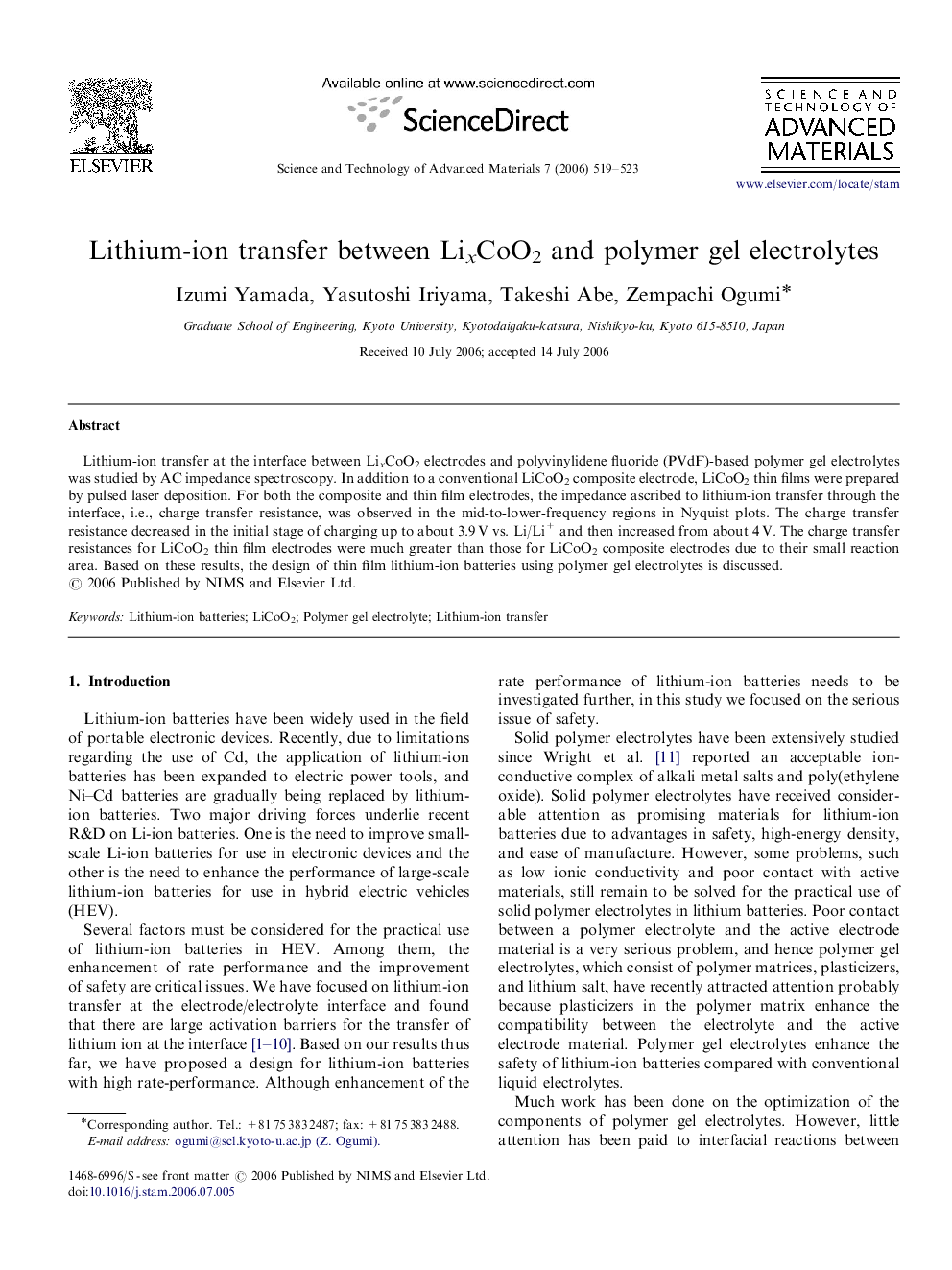| Article ID | Journal | Published Year | Pages | File Type |
|---|---|---|---|---|
| 1590972 | Science and Technology of Advanced Materials | 2006 | 5 Pages |
Abstract
Lithium-ion transfer at the interface between LixCoO2 electrodes and polyvinylidene fluoride (PVdF)-based polymer gel electrolytes was studied by AC impedance spectroscopy. In addition to a conventional LiCoO2 composite electrode, LiCoO2 thin films were prepared by pulsed laser deposition. For both the composite and thin film electrodes, the impedance ascribed to lithium-ion transfer through the interface, i.e., charge transfer resistance, was observed in the mid-to-lower-frequency regions in Nyquist plots. The charge transfer resistance decreased in the initial stage of charging up to about 3.9Â V vs. Li/Li+ and then increased from about 4Â V. The charge transfer resistances for LiCoO2 thin film electrodes were much greater than those for LiCoO2 composite electrodes due to their small reaction area. Based on these results, the design of thin film lithium-ion batteries using polymer gel electrolytes is discussed.
Related Topics
Physical Sciences and Engineering
Materials Science
Materials Science (General)
Authors
Izumi Yamada, Yasutoshi Iriyama, Takeshi Abe, Zempachi Ogumi,
